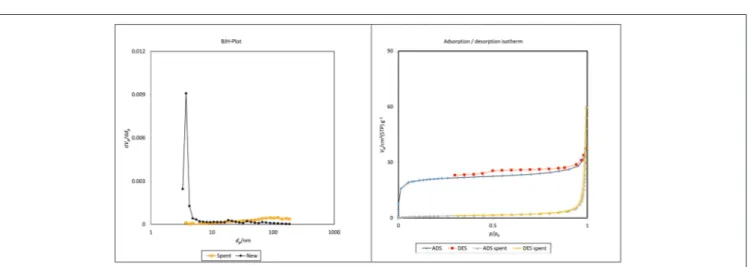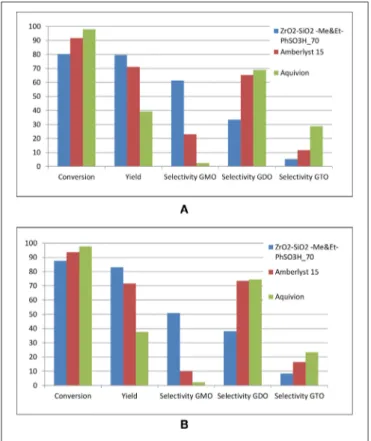Esterification of Glycerol With Oleic Acid Over Hydrophobic Zirconia-Silica Acid Catalyst and Commercial Acid Catalyst: Optimization and Influence of Catalyst Acidity
Texte intégral
Figure




Documents relatifs
To cite this version : Bourneuf, Séda and Jacob, Matthieu and Albasi, Claire and Sochard, Sabine and Richard, Romain and Manero, Marie-Hélène Load variations buffering
We show that the dynamic version of the LQCMKV control problem defined by a random field value function, has a quadratic structure with respect to the conditional law of the
L’accès à ce site Web et l’utilisation de son contenu sont assujettis aux conditions présentées dans le site LISEZ CES CONDITIONS ATTENTIVEMENT AVANT D’UTILISER CE SITE WEB..
En d´epit de nos efforts pour am´eliorer la r´eponse m´ecanique du miroir `a la pression de radiation (voir figure 2.31 ), il semble que notre syst`eme ne nous permette pas de
Low yield and productivity + inhibition Efficiency and selectivity of the reactive extraction Low pH – TOA/Aliquat (18/2) ratio Harmful impact of Aliquat 336 compared
In Situ Product Recovery | 3-hydroxypropionic acid (3-HP) | reactive extraction | hollow fiber membrane contactor | glycerol
As shown in Figure 4B, the predicted maximum growth rate was achieved when using glucose as the sole carbon source, while the predicted maximum 3-HP production rate was reached
By using acetic acid in excess, no significant change of epichlorohydrin conversion is noticed, which is in agreement with the zero order kinetics with respect to acid

